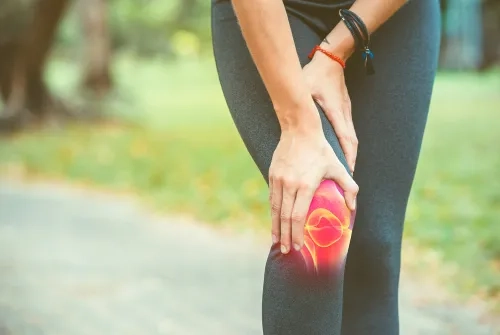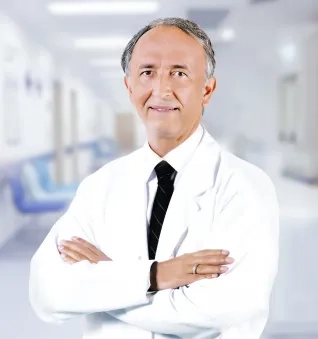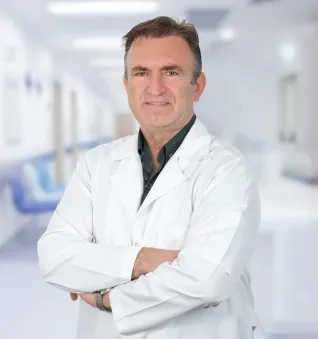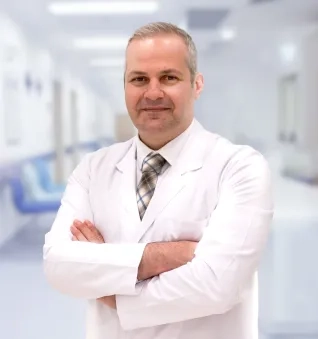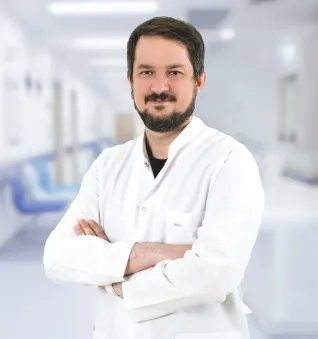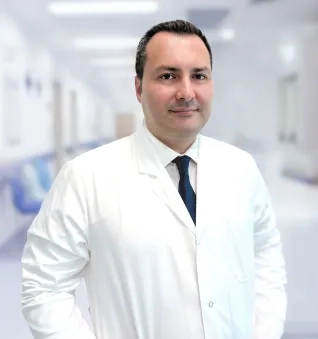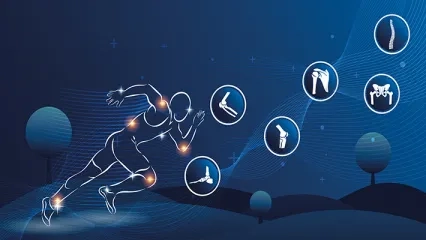Alo Yeditepe
Alo Yeditepe
Knee Pain
We do movements such as walking, sitting, climbing stairs, and squatting many times in our daily life, but we are not aware of our knees while doing these movements under normal conditions. The knee joint and its surrounding soft tissues play a role in standing against gravity, stability during walking, and formation of the movement. Complaints related to the knee joint can occur at any age.
Common complaints
- Pain
- Swelling in and around the joint
- Locking
- Limitation of movement or stiffness in the joint
- Crackling sound
If you have one or more of these complaints, consult your doctor. Because waiting can lead to the worsening of the condition with the loss of time. Correct diagnosis is essential for correct treatment. The main thing for the correct diagnosis is detailed questioning of the complaints and physical examination. Tests such as blood and urine tests, x-rays and MRI only come next as complementary to this examination.
What is the Structure of the Knee Joint?
The knee joint is a joint made up of three bones, namely the thighbone, shinbone, and kneecap. The cartilage structure bears the loads on the joint and helps the joint to move smoothly and regularly. The cartilage-like soft tissue called as meniscus also has a similar function. Ligaments connect the bones and are responsible for the stability of the joint. The muscles are responsible for both movement and knee stability. Tendons are where muscles attach to bones and can be a source of pain in strains. The soft tissues we refer to here are located between the bones and ligaments and provide benefits against friction and strain. Knee joint pain may be caused by one or more of these structures. Treatment options also vary according to the anatomical structure from which it originates.
Painful Knee Joint Diseases
Osteoarthritis (joint rheumatism-calcification)
Degenerative joint disease, osteoarthritis, which is known as rheumatism among people and causes joint pain, swelling, coarsening, and limitation of movement, is a very common cause of knee pain, especially after the age of 40. Artificial intra-articular fluid application and the use of natural nutritional supplements such as glucosamine-chondroitin sulfate can also be benefited in this disease, the main treatment of which is physical therapy. These types of products must be used under the advice and supervision of a doctor. Because although it is not accepted as a drug, it should be followed up in some respects.
Inflammatory Joint Rheumatism
It is a disease that is less common in the community, with more prominent swelling and temperature increase, and resting pain is at the forefront. Basically, some rheumatism drugs that slow down the progression of the disease are used in the treatment. Gout is also an inflammatory disease that is most common in the knee after the big toe. Joint inflammation due to infection is also seen at substantial rates in our country. Swelling, redness, and pain in the joint may progress very quickly, while it may show a slower course in infections such as tuberculosis and brucella. This setting, called septic arthritis, requires urgent diagnosis and treatment because if it is delayed, it can leave permanent damage. As we often dwell on, the diagnosis can be made as a result of a detailed history and physical examination. The diagnosis is confirmed by the necessary blood tests and imaging methods, and medical treatment is planned quickly. The right solution for a definitive diagnosis is drawing the fluid from the joint and sending it to culture.
In addition, local pain and swelling may occur as a result of damage to the soft tissues due to difficult movements such as tendinitis, bursitis, or sudden reverse movements. Not every knee pain and swelling means rheumatism.
Meniscus Tear
If the meniscus and cruciate ligament tear is due to trauma, the pain is usually severe and sudden. The knee swells and sometimes it can be locked in a short time. Meniscus tears due to joint degeneration can be seen even without trauma. The treatment approach may also differ from trauma-related tears and tears that occur in this way. While surgical applications are more prominent in meniscal tears due to trauma, physical therapy, and exercise programs should be preferred primarily in tears due to degeneration. But it should not be forgotten that the priority of all these treatment options is the preference of the physician not only according to the diagnosis and cause but also according to the examination.
Patellofemoral Pain Syndrome
The most well-known type of these diseases is the chondromalacia patella. It refers to the softening of the cartilage on the joint surface of the kneecap or the deterioration of the inside of the joint. Movements made by bending the knee, such as running, climbing stairs, squatting, and jumping, cause pain by removing the load on the joint. Pain is felt in front of the knee. This type of patient is generally in the younger age group.
Intermittent Hydroarthrosis
It is characterized by periodic swelling of the knee joint. It is especially seen in young women. Swelling develops within 24 hours and gradually disappears in 2-4 days. Although the knee is swollen, the pain may be minimal.
Osteochondritis Dissecans
It is the partial separation of a piece of cartilage and a piece of subchondral bone from the joint surface. Afterward, this part may completely separate and fall into the joint and become a foreign body. In this case, the joint may be locked.
Apart from these, there are also causes of joint-related knee pain such as osteonecrosis (decay due to blood supply disorder in the bone), patella (kneecap) dislocations, bone tumors, and joint mouse.
Pain Not Originating from the Knee Joint But Felt in the Knee
Pain due to hip and lower back problems may be felt in the knee in some cases. The source of the pain can be determined with a good examination.
Treatment
The treatment option to be applied to the patient varies according to the age, activity level, and occupation of the patient as well as the diagnosis.
The first goal is to reduce pain and swelling and to provide tissue healing in a newly formed traumatic situation. Ice application and pain relief anti-inflammatory drugs are used for this condition. The patient is allowed to rest with an elastic bandage and splint. The appropriate exercise program is started at the appropriate time and with the right exercise program, according to the evaluation of the physical therapist. If the fluid in the joint is too much, the fluid is drained to relieve tension. If fluid accumulates for the second time, the fluid can be drained again, and intra-articular cortisone injection can be considered.
Soft tissue injections can be used for pain and swelling caused by the surrounding soft tissue. Permanent and very positive results are obtained by applying physical therapy applications, electrotherapy, and exercise programs together in case of chronic pain that has existed for a long time,
Blood flow in the tissue, tissue repair, stimulation of cartilage production, elimination of edema and stiffness, the opening of joint movement restrictions, strengthening of muscle groups, and reduction of pain are ensured with physical therapy applications.
Department of Physical Therapy and Rehabilitation
Contact information: 0216 578 40 38 - 0216 467 88 60 / 62 20
This content was prepared by Yeditepe University Hospitals Medical Editorial Board.
”
See Also
- What are Hip Joint Diseases? Causes and Treatment
- Robotic Hip Replacement Surgery
- Knuckle Cracking Can Be Dangerous When It Becomes a Habit!
- Things to Consider When Walking in Snowy Weather
- What is Hallux Rigidus (Stiff Big Toe/Toe Arthritis)? Symptoms and Treatment
- What is Hallux Valgus (Bunion)? How is it Treated?
- What is a Bone Tumor? Bone Tumor Symptoms
- Meniscus and Cartilage Transplantation Can Be Done at the Same Time
- What is Crooked Leg? Can Crooked Legs Be Treated?
- What Causes Shoulder Dislocation? Shoulder Dislocation Treatment
- Knee Pain
- Wrist Pain Causes and Treatment
- Ergonomics in Automobiles Prevents Accidents
- Don't Underestimate Bone Pain That Doesn't Make You Sleep and Doesn't Relieve With Medication
- Joint Pain and Causes of Joint Pain
- Walking and Returning to Social Life After Knee Replacement Surgery
- What Are the Advantages of Robotic Knee Replacement Surgery?
- Robotic Knee Prosthesis Surgery
- Why Does Ankle Pain Occur? What Is the Treatment?
- What Causes Hip Pain? How Does Hip Pain Go Away?
- The Usage Area of Robotic Surgery Expands in Orthopedic Surgeries
- Higher Risk of Anterior Cruciate Ligament and Ankle Injury in Female Athletes
- Patients Who Undergo Joint Replacement Surgery Can Stand Up and Walk the Next Day
- Spinal Fractures
- Big Toes Can Be A Big Problem!
- What is Synovitis in Joints?
- Hip Osteoarthritis and Hip Prosthesis
- Hip Impingement Syndrome
- What is the Future of Treating Cartilage Problems?
- Not Only Athletes Suffer from Meniscus Tears!
- Is Cartilage Damage More Common in Those Who Run for Long Periods?
- Beware If Your Shoulder Or Neck Pain Lasts Longer Than Two Days After Swimming!
- Mistakes While Swimming Can Cause Shoulder Pain
- What is a Stress Fracture? How to Treat Stress Fracture?
- Myths About Fractures
- Vitamin D Deficiency May Be The Cause Of Your Joint Pain
- The First Onset of Pain in Cartilage Damage in the Knee Should Not Be Overlooked
- Have Your Baby Take Their First Steps in Good Health
- Heavy School Bags Can Cause Pain in the Lower Back, Shoulders, and Hands!
- Sports Injuries
- Cartilage Transplantation from Donor Has Been Started to Perform in Turkey
- Working From Home Increases Waist and Neck Problems
- He Walked Out Of The Hospital Where He Entered On Crutches
- First Cartilage Transplant from a Donor
- Pay Attention to the Pain That Occurs in the Front Part of Your Knees While Playing Sports!
- 8 Common Misconceptions About Sports Injuries
- Young Patient Who Could Not Walk Due to Cartilage Damage Recovered With Cartilage Transplantation
- Knee Arthritis
- Biopsy for Bone and Soft Tissue Tumors
- Crunching in the Kneecap May Be a Sign of Calcification
- Injured Athletes Can Return To Sports With Cartilage Transplant
- Treatment of Knee Arthrosis Varies According to the Person
- A Lack of Attention to Sports Injuries in Children May Affect Their Development
Alo Yeditepe

